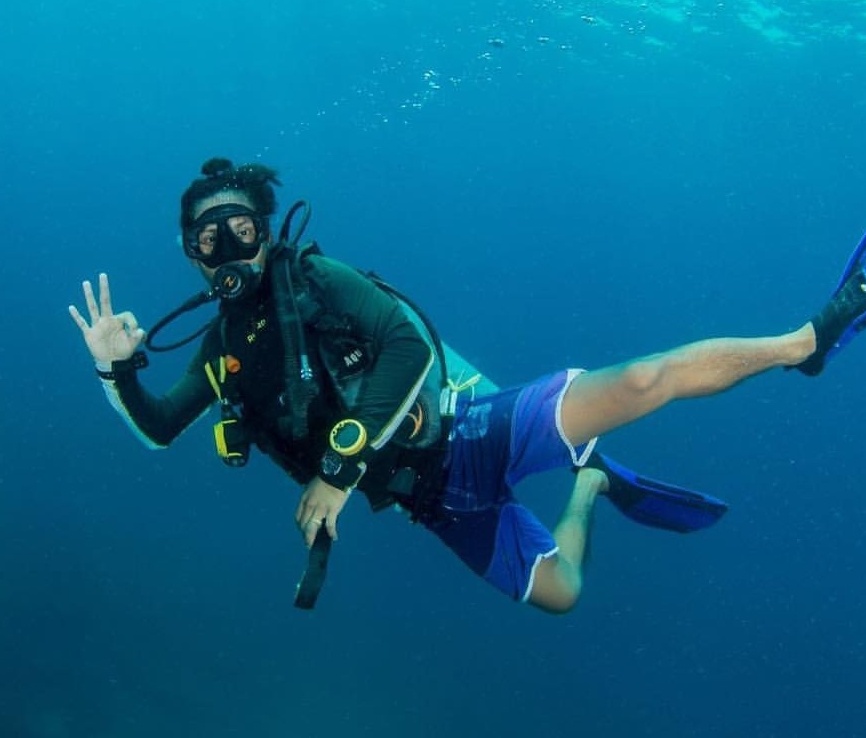People can discover the interesting world below the ocean’s surface by diving, which is a thrilling and adventurous activity. However, it’s crucial to prioritize safety when undertaking such endeavours. One of the fundamental aspects of ensuring a safe diving experience is selecting the appropriate dive gear.
Dive gear encompasses a range of equipment designed to facilitate underwater exploration while ensuring the diver’s safety and comfort. Key components of dive gear include:
Mask, Snorkel, and Fins: These items enable divers to see underwater, breathe efficiently at the surface, and maneuver effectively while swimming.
Wetsuit or Drysuit: These garments provide thermal insulation, protecting divers from the cold temperatures encountered in underwater environments.
Buoyancy Control Device (BCD): Divers can control their buoyancy by pumping up or deflating air tanks in the BCD. This lets them go up or down and stay at neutral buoyancy underwater.
Regulator and Octopus: The octopus is a backup regulator in case the main regulator breaks down. The regulator brings air from the diving tank to the diver’s mouth.
Dive Computer: This device monitors dive depth, time, and decompression limits, helping divers plan and execute safe dives.
Weights and Weight Belt: These accessories help divers achieve proper buoyancy control by compensating for the buoyancy of their wetsuit and equipment.
Dive Lights: Essential for enhancing visibility in low-light conditions or exploring dark underwater environments.
The Importance of Proper Dive Gear Selection
Now that we have an overview of dive gear let’s explore why selecting the right equipment is paramount for diver safety:
Reliability and Performance: Properly maintained and high-quality Ocean Pro dive gear ensures reliable performance underwater. Malfunctioning equipment can jeopardize diver safety and lead to potentially life-threatening situations. You can lower the chance that your gear will break during dives by buying well-known names and having it serviced regularly.
Fit and Comfort: Ill-fitting dive gear can cause discomfort and distraction, detracting from the diving experience and potentially compromising safety. Each piece of equipment should be selected based on individual preferences and anatomical considerations to ensure a snug yet comfortable fit. For example, a properly fitting mask should create a watertight seal without causing pressure points on the face, while fins should provide adequate propulsion without causing chafing or blisters.
Buoyancy Control: Achieving optimal buoyancy is essential for safe and enjoyable diving. Properly fitting BCDs, weights, and weight distribution play a crucial role in maintaining neutral buoyancy throughout the dive. Overweighting or underweighting can lead to difficulty descending or ascending, increasing the risk of barotrauma or decompression sickness. By carefully selecting and adjusting your buoyancy control system, you can enhance your buoyancy control skills and dive with confidence.
Environmental Adaptability: Dive gear should be selected based on the specific environmental conditions encountered during dives. For example, diving in cold water requires the use of appropriate thermal protection such as a thick wetsuit or drysuit to prevent hypothermia. Similarly, diving in low-visibility environments may necessitate the use of bright dive lights and reflective markers to enhance safety and navigation. By considering environmental factors when selecting dive gear, divers can better prepare for the challenges they may encounter underwater.
Emergency Preparedness: Proper dive gear selection includes contingency planning for emergencies. Divers should equip themselves with redundant systems such as alternate air sources (e.g., octopus regulators), dive knives or cutting tools, signalling devices (e.g., whistles or surface marker buoys), and emergency oxygen kits. Additionally, carrying a dive computer with integrated decompression algorithms enables divers to monitor their nitrogen saturation levels and plan safe ascent profiles, reducing the risk of decompression illness.
Conclusion
In conclusion, the importance of proper dive gear selection cannot be overstated when it comes to diver safety. By investing in reliable, well-fitting equipment, divers can enhance their comfort, performance, and emergency preparedness underwater. Whether you’re a novice diver or a seasoned enthusiast, prioritizing safety through proper dive gear selection is essential for enjoying a lifetime of memorable and risk-free diving experiences. Remember, safety first, and happy diving!






